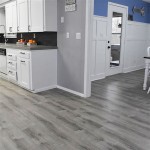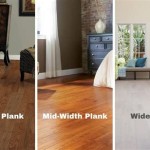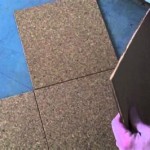Laminate Flooring Underlayment with Moisture Barrier: A Comprehensive Guide
Laminate flooring has become a popular choice for homeowners and businesses alike due to its durability, affordability, and aesthetic versatility. However, the longevity and performance of laminate flooring are highly dependent on the underlayment selected. A crucial component of a successful laminate floor installation is the use of underlayment with a built-in moisture barrier. This article will delve into the importance of laminate flooring underlayment with a moisture barrier, exploring its functions, types, benefits, and proper installation methods.
Underlayment, in general, serves as a foundation between the subfloor and the laminate planks. It provides a smooth, even surface for the flooring to rest upon, offering cushioning, sound insulation, and, most importantly in this context, moisture protection. Underlayment with a moisture barrier is specifically designed to prevent moisture from seeping upwards from the subfloor and damaging the laminate planks.
Laminate flooring, while being relatively water-resistant on its surface, is susceptible to moisture damage from underneath. Wood-based subfloors, especially in basements or areas with high humidity, can transmit moisture that can warp, swell, and delaminate the laminate planks. This can lead to costly repairs or even necessitate a complete floor replacement. Utilizing underlayment with a moisture barrier is a proactive measure to mitigate these risks and extend the lifespan of the laminate flooring.
The moisture barrier component typically consists of a thin polyethylene or similar waterproof film laminated to the underlayment material. This film acts as a shield, preventing moisture vapor from rising and affecting the laminate. It is essential to choose an underlayment with a moisture barrier that meets or exceeds industry standards for vapor transmission, ensuring adequate protection against moisture-related issues.
Key Benefits of Using Underlayment with Moisture Barrier
The primary advantage of incorporating underlayment with a moisture barrier is, obviously, the prevention of moisture damage. This is particularly crucial in areas prone to dampness, such as basements, kitchens, and bathrooms. The moisture barrier shields the laminate core from absorbing moisture, which can cause warping, buckling, and the growth of mold and mildew. These issues can compromise the structural integrity of the flooring and create an unhealthy living environment.
Beyond moisture protection, underlayment also provides sound insulation. The dense material of the underlayment absorbs impact noise, reducing the sound transmission between floors. This is particularly beneficial in multi-story homes or apartments, where minimizing noise is a priority. Certain underlayments are specifically designed with enhanced sound insulation properties, offering even greater noise reduction. The sound transmission class (STC) and impact insulation class (IIC) ratings of the underlayment indicate its sound-dampening capabilities. Higher ratings signify better sound insulation performance.
Furthermore, underlayment contributes to the overall comfort and stability of the laminate flooring. It provides a cushioning effect underfoot, making the floor more comfortable to walk on. The underlayment also helps to distribute weight evenly across the floor, preventing localized stress points that could lead to cracks or other damage. By creating a smooth and uniform surface, underlayment ensures that the laminate planks are properly supported, resulting in a more stable and durable floor.
Types of Laminate Flooring Underlayment with Moisture Barrier
Various types of laminate flooring underlayment with moisture barriers are available, each offering different characteristics and benefits. These include:
Foam Underlayment: Foam underlayment is a common and cost-effective option. It is typically made from polyethylene or polyurethane foam and provides good cushioning and sound insulation. Integrated moisture barriers are frequently included with foam underlayment. This type is lightweight, easy to install, and suitable for most standard laminate flooring applications. However, its density may be less than other options, potentially impacting its long-term durability under heavy traffic.
Cork Underlayment: Cork underlayment is a natural and sustainable option known for its excellent sound insulation and thermal properties. It is also naturally resistant to mold and mildew growth. Cork underlayment with an integrated moisture barrier provides superior protection against moisture infiltration. While it is generally more expensive than foam underlayment, its durability and environmental benefits make it a desirable choice for many consumers. It's also a good option for uneven subfloors as it can conform to minor imperfections.
Rubber Underlayment: Rubber underlayment is a high-density option that provides exceptional sound insulation and impact resistance. It is often made from recycled rubber, making it an environmentally friendly choice. Rubber underlayment with a moisture barrier is ideal for high-traffic areas or installations where superior soundproofing is required. Its density and durability make it a long-lasting option, but it can also be more expensive and slightly more challenging to install than foam or cork underlayment.
Combination Underlayment: Some underlayments combine different materials to achieve a specific set of properties. For example, an underlayment may consist of a layer of foam for cushioning and a layer of cork for sound insulation, with an integrated moisture barrier to protect against moisture. These combination underlayments offer a balance of benefits and can be tailored to meet specific requirements.
When selecting an underlayment, it is essential to consider the specific needs of the installation. Factors such as the type of subfloor, the level of foot traffic, and the desired level of sound insulation should all be taken into account. Consulting with a flooring professional can help determine the best underlayment option for your particular situation.
Proper Installation of Underlayment with Moisture Barrier
Proper installation of the underlayment is critical to ensure its effectiveness and longevity. Incorrect installation can compromise the moisture barrier and reduce its sound insulation capabilities. The following steps outline the general procedure for installing underlayment with a moisture barrier:
Preparation: Thoroughly clean and prepare the subfloor. Remove any debris, nails, or staples that could interfere with the underlayment. Ensure that the subfloor is level and free of any significant imperfections. Minor imperfections can be addressed with a self-leveling compound if necessary. The subfloor should also be dry before installing the underlayment. Use a moisture meter to verify that the moisture content of the subfloor is within acceptable limits.
Unrolling and Cutting: Unroll the underlayment and allow it to acclimate to the room temperature for at least 24 hours. This will help prevent the underlayment from shrinking or expanding after installation. Measure the area to be covered and cut the underlayment to size using a utility knife or scissors. It is generally recommended to leave a slight expansion gap around the perimeter of the room to allow for natural expansion and contraction of the flooring materials due to temperature and humidity changes.
Seaming and Taping: Lay the underlayment strips edge to edge, ensuring that the seams are tightly butted together. Use moisture-resistant tape to seal the seams, creating a continuous moisture barrier. Overlap the tape slightly onto each adjacent strip of underlayment. This will prevent moisture from penetrating through the seams. For underlayments where the moisture barrier is a separate component, ensure that the edges are properly overlapped and sealed according to the manufacturer's instructions. It's crucial to follow the specific taping instructions provided by the underlayment manufacturer, as different underlayments may require different types of tape and application techniques.
Securing the Underlayment: Depending on the type of underlayment, it may be necessary to secure it to the subfloor using staples, adhesive, or a combination of both. Follow the manufacturer's recommendations for securing the underlayment. Ensure that the staples or adhesive do not penetrate the moisture barrier, as this could compromise its effectiveness. In some cases, the weight of the laminate flooring itself is sufficient to hold the underlayment in place.
Inspecting the Installation: After installing the underlayment, carefully inspect the entire area to ensure that the moisture barrier is intact and that all seams are properly sealed. Any tears or punctures in the moisture barrier should be repaired with moisture-resistant tape. Verify that the underlayment is lying flat and that there are no wrinkles or bubbles. These imperfections can affect the stability and appearance of the laminate flooring.
Following these installation guidelines will help ensure that the underlayment with moisture barrier provides effective protection against moisture damage and enhances the performance of the laminate flooring. Consult the manufacturer's instructions for specific installation recommendations for the chosen underlayment product.
Considerations for Specific Applications
Certain applications require specific considerations when choosing and installing laminate flooring underlayment with a moisture barrier.
Basements: Basements are particularly prone to moisture problems due to their proximity to the ground. When installing laminate flooring in a basement, it is essential to choose an underlayment with a high-performance moisture barrier. Concrete subfloors in basements can be especially challenging, as they can wick moisture from the surrounding soil. In these situations, it may be necessary to install a separate vapor barrier underneath the underlayment for added protection. Consider using a thicker underlayment with a higher R-value for added insulation, as basements tend to be colder than other areas of the home.
Radiant Heat Systems: If the laminate flooring is being installed over a radiant heat system, it is crucial to choose an underlayment that is specifically designed for this purpose. Standard underlayments can impede the transfer of heat, reducing the efficiency of the radiant heat system. Look for underlayments with a low thermal resistance (R-value) to allow for optimal heat transfer. Ensure that the underlayment is compatible with the type of radiant heat system being used (e.g., electric or hydronic). Follow the manufacturer's instructions for installation over radiant heat systems, as specific precautions may be necessary.
Concrete Subfloors: Concrete subfloors can be uneven and prone to moisture issues. Before installing the underlayment, ensure that the concrete subfloor is properly prepared. Fill any cracks or holes with a concrete patching compound and grind down any high spots to create a smooth, level surface. Test the moisture content of the concrete using a moisture meter and allow it to dry completely before installing the underlayment. Consider using a self-leveling compound to create a perfectly level surface if necessary. A separate vapor barrier underneath the underlayment is often recommended for concrete subfloors, especially in areas with high humidity or potential for moisture intrusion.
Existing Hardwood Floors: Installing laminate flooring over existing hardwood floors can be a convenient way to update the look of a room without removing the existing flooring. However, it is important to ensure that the hardwood floor is in good condition before installing the underlayment. Repair any damaged or loose boards and thoroughly clean the surface to remove any dirt or debris. The existing hardwood floor can actually act as an additional layer of insulation and soundproofing. However, it is still essential to use an underlayment with a moisture barrier to protect the laminate flooring from any potential moisture issues.
Selecting the appropriate laminate flooring underlayment with a moisture barrier is a critical step in ensuring the long-term performance and durability of the flooring. By understanding the different types of underlayment available, the benefits they offer, and the proper installation techniques, homeowners and businesses can make informed decisions that protect their investment and create a comfortable and long-lasting flooring solution. It is always recommended to consult with flooring professionals for guidance tailored to specific installation needs and conditions.

Underlay Supreme With Moisture Barrier Ewa2

Quietwalk Underlayment For Floating Floors The Green Design Center

What Is A Moisture Barrier And When It Needed For Flooring Inc

Quietwalk 100 Sq Ft 3 X 33 Mm Underlayment With Sound And Moisture Barrier For Laminate Engineered Floors Qw100b1lt The Home Depot

Novostrat Combat Foam Underlay With Moisture Barrier 15mx1mx3mm For Laminate And Engineered Flooring Travis Perkins

What Is A Moisture Barrier And When It Needed For Flooring Inc

Blue Polyethylene Moisture Barrier And Vapor Underlayment 6mil Dekorman

Underlay Options Onflooring

Does The Quiet Walk Underlayment Plastic Vapor Barrier Face Up Or Down When Installing Mp Global S Llc

Vapor Barrier Under Laminate Floor And Floating Problems
Related Posts








